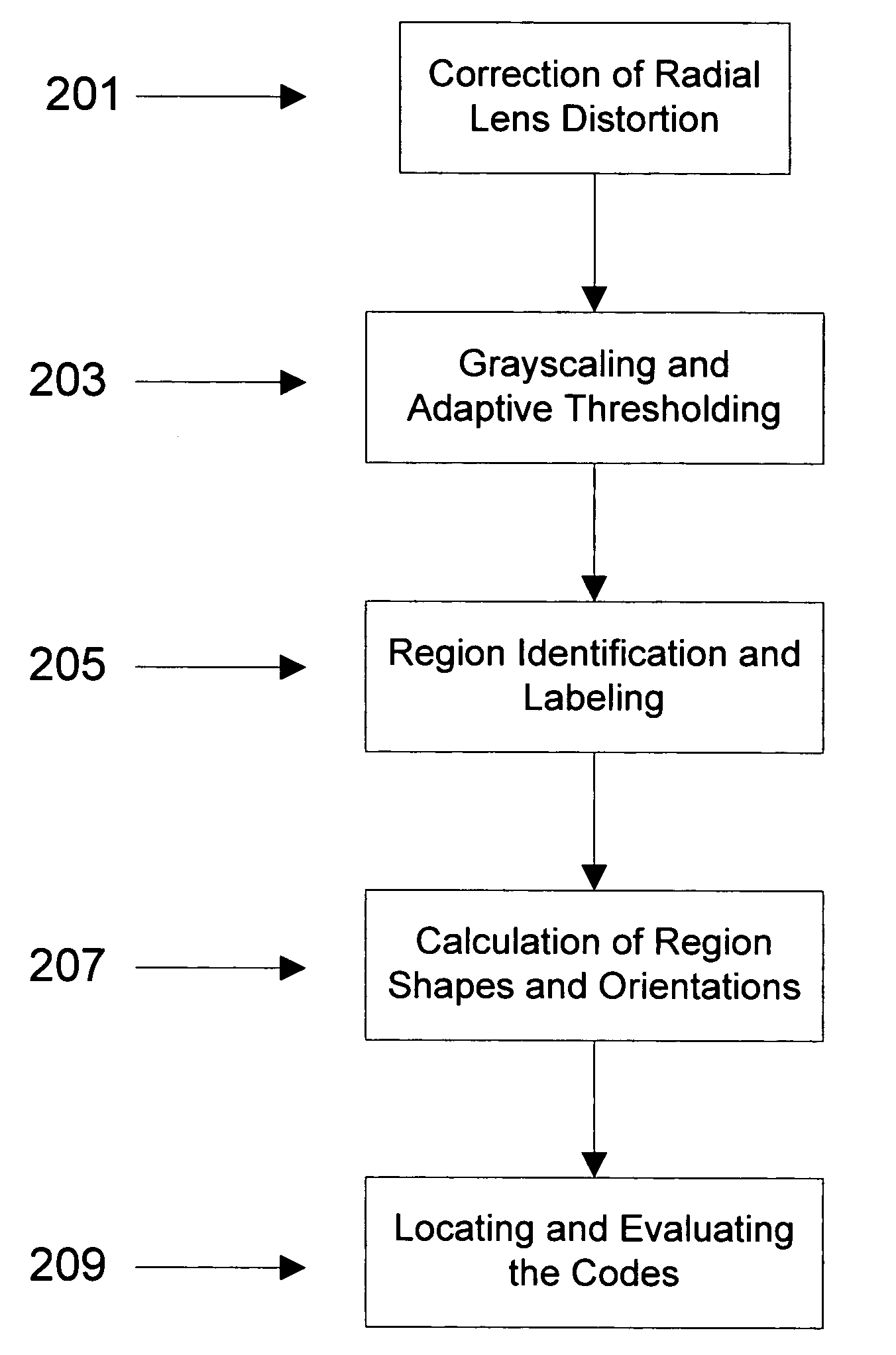Visual code system for camera-equipped mobile devices and applications thereof
a mobile device and code technology, applied in still video cameras, instruments, electromagnetic radiation sensing, etc., can solve the problems of limited mobile devices produced for the general public that contain integrated laser-based scanners, curtailed their expansion into the mobile marketplace, and few mobile devices that contain mobile devices attached to scanners. , to achieve the effect of simplifying the interaction with the mobile device itself, short interaction time, and simplifying the interaction with the mobile devi
- Summary
- Abstract
- Description
- Claims
- Application Information
AI Technical Summary
Benefits of technology
Problems solved by technology
Method used
Image
Examples
Embodiment Construction
)
[0031] The following presents a detailed description of a preferred embodiment (as well as some alternative embodiments) of the present invention. However, it should be apparent to one skilled in the art that the described embodiment may be modified in form and content to be optimized for a wide variety of situations.
[0032] With reference first to FIG. 1, shown is an example of visual code 101 utilized in the present invention. Visual code 101 consists of large guide bar 103 and small guide bar 105 for determining the location and orientation of visual code 101, three cornerstones 107, 109, and 111, for detecting distortion and the data area with the actual code bits. The displayed version of visual code 101 has a capacity of 83 bits, but its design is generic and suitable for extension to a larger number of bits. Visual code 101 can be reliably located even in a low quality image which is small and tilted.
[0033] Visual code 101 may be printed utilizing either standard ink or inf...
PUM
 Login to View More
Login to View More Abstract
Description
Claims
Application Information
 Login to View More
Login to View More - R&D
- Intellectual Property
- Life Sciences
- Materials
- Tech Scout
- Unparalleled Data Quality
- Higher Quality Content
- 60% Fewer Hallucinations
Browse by: Latest US Patents, China's latest patents, Technical Efficacy Thesaurus, Application Domain, Technology Topic, Popular Technical Reports.
© 2025 PatSnap. All rights reserved.Legal|Privacy policy|Modern Slavery Act Transparency Statement|Sitemap|About US| Contact US: help@patsnap.com



